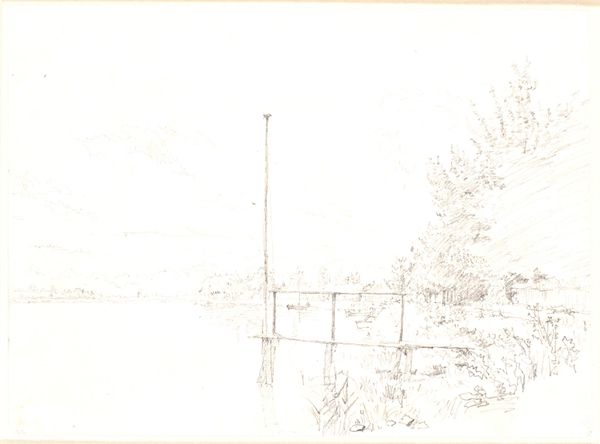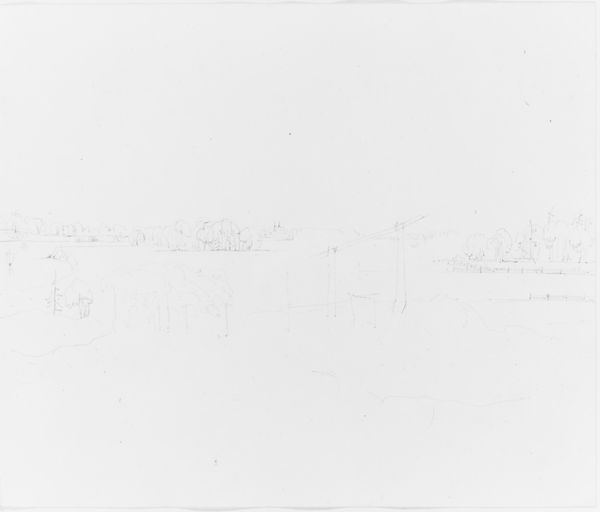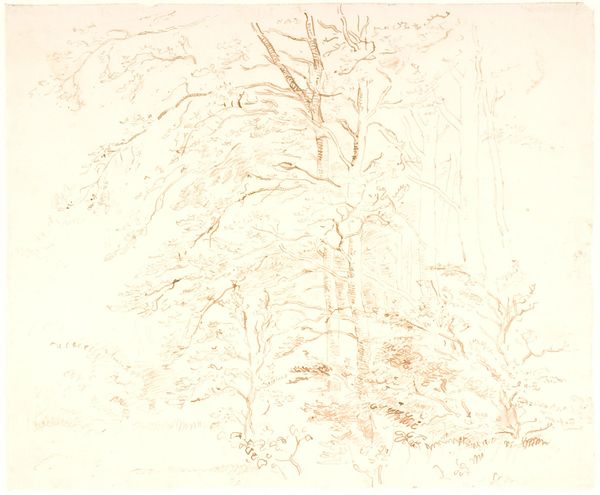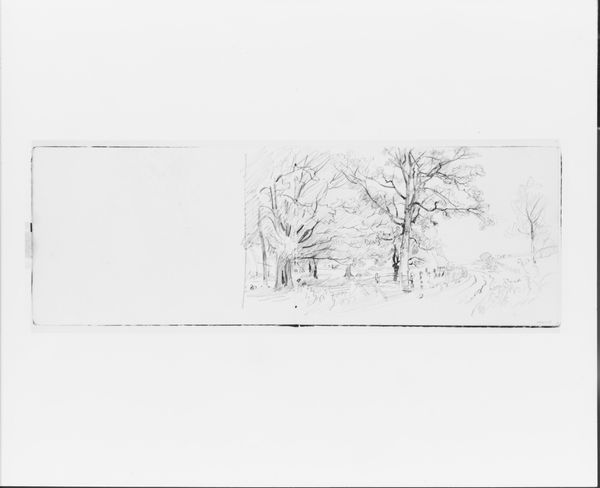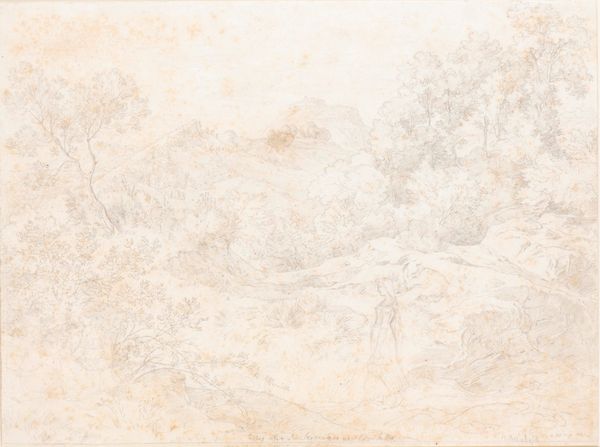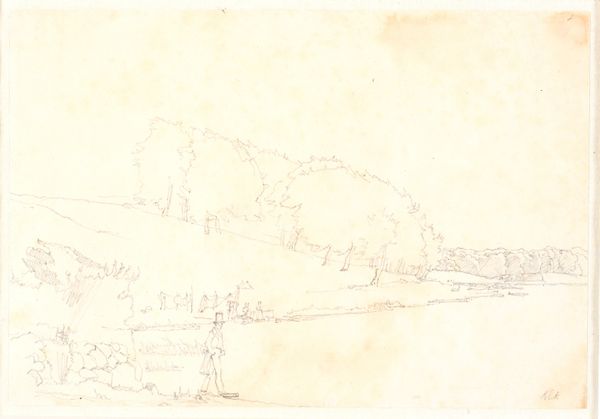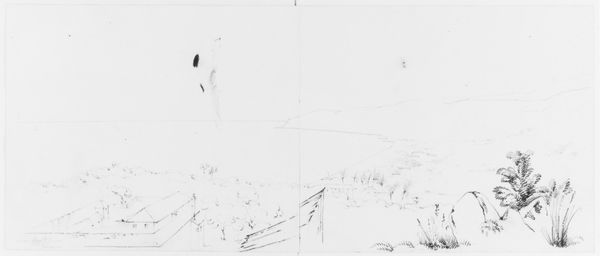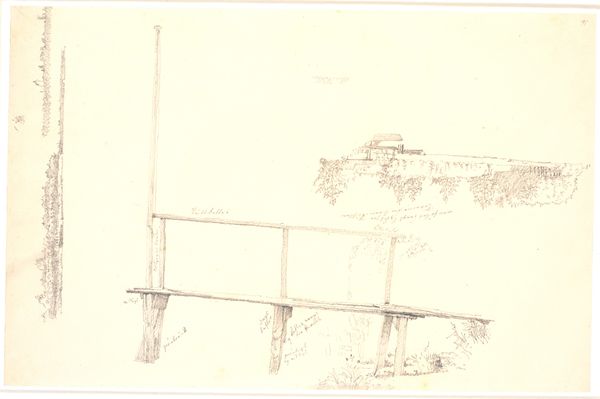
Parti i nærheden af Kalkbrænderiet med udsigt mod København 1834 - 1835
0:00
0:00
drawing, pencil
#
drawing
#
landscape
#
etching
#
hand drawn
#
romanticism
#
pencil
#
realism
Dimensions: 208 mm (height) x 347 mm (width) (bladmaal)
Curator: Immediately striking is the sheer ethereal quality of this drawing. It almost fades into the paper itself. Editor: We are looking at "Parti i nærheden af Kalkbrænderiet med udsigt mod København," or "View Near Kalkbrænderi with a View Towards Copenhagen," created by Christen Købke around 1834-35. Købke's works often explore the changing landscape of Denmark and reflect the era's national romanticism. Curator: I am not surprised to hear it embodies romanticism! It does make you want to pause and feel the airy atmosphere above the trees, even though it’s just pencil on paper. The texture! The different line weights give form to the natural landscape and the suggestion of depth. Editor: Yes, there's an interplay between realism and romantic idealism, so emblematic of that time. Kalkbrænderiet, was an industrial area just outside Copenhagen. Købke highlights a harmonious coexistence between nature and early industry, quite relevant during a period when Denmark underwent significant urban development. Curator: It feels deliberately ambivalent. See how Købke avoids heavy shading? The evenness evokes a soft, dreamlike impression. Even with industrial progress happening on the horizon, it reads almost bucolic, don't you think? A sense of nostalgia perhaps? Editor: Certainly. The very act of drawing such a location validates its significance, turning what some might view as a mere industrial periphery into something beautiful, even worthy of preservation in artistic memory. The composition subtly champions a localized, Danish identity through the artist's rendering of space. Curator: Considering the industrial encroachment during this time, the sparseness makes you question what "progress" really means. The composition frames Copenhagen on the skyline, far in the background. It almost presents industry at bay, at the fringes of nature, beyond the lone figures. Editor: This pencil drawing offers us more than just an image. It serves as an entry point to considering Danish identity amidst broader changes in the early 19th century, illustrating how artistic production can directly engage with socio-political discourses. Curator: For me, I leave feeling more than that, like the almost washed-out quality creates something precious and private to be looked at. I am glad we looked closer at this rendering of light.
Comments
No comments
Be the first to comment and join the conversation on the ultimate creative platform.
